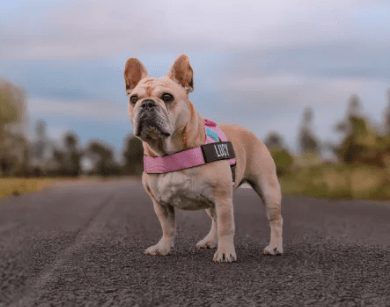Contemporary companion animal restraint systems have undergone significant technological advancement, incorporating sophisticated engineering principles that address species-specific physiological requirements. Veterinary research demonstrates that improper restraint equipment selection can lead to musculoskeletal disorders, respiratory compromise, and behavioral modifications in domestic dogs. Professional animal behaviorists and veterinary orthopedic specialists consistently recommend harness systems over traditional collar-based restraints due to superior force distribution characteristics and reduced injury risk profiles. Understanding the complex relationship between breed morphology, activity requirements, and pet harness design specifications enables owners to make evidence-based equipment selections that optimize both safety and performance outcomes.

Morphological Considerations Across Breed Classifications
Canine skeletal architecture varies dramatically between breed groups, necessitating harness designs that accommodate these fundamental anatomical differences. Toy breeds, typically weighing under 10 pounds, require harness systems with proportionally scaled hardware and ultra-lightweight materials to prevent mobility restriction. Their delicate tracheal structures and proportionally larger heads relative to neck circumference demand specialized fitting protocols.
Giant breeds present opposing challenges, requiring harness systems capable of managing forces exceeding 200 pounds while maintaining comfort across extended wear periods. Their deep chest cavities and prominent shoulder musculature necessitate harness designs with adjustable geometry to accommodate growth patterns and seasonal weight fluctuations.
Sighthounds represent a unique category requiring specialized consideration due to their distinctive body proportions. Their narrow heads, deep chests, and tucked abdomens create fitting challenges that standard harness designs often cannot accommodate effectively.
Activity-Specific Performance Requirements
Different activities impose varying mechanical demands on pet restraint systems. Urban walking scenarios typically involve intermittent low-force applications with occasional sudden stops or directional changes. Trail hiking introduces additional variables including terrain-induced gait modifications, temperature fluctuations, and extended wear duration requirements.
Service animal applications demand harness systems engineered for continuous daily use with minimal maintenance requirements. These specialized harnesses incorporate reinforced stress points, ergonomic handle placements, and identification marking systems while maintaining the comfort standards necessary for extended wear periods.
Working dog applications, including search and rescue, law enforcement, and military operations, require harness systems designed to interface with specialized equipment while maintaining operational mobility and safety standards.
Advanced Material Technologies and Construction Methods
Modern harness manufacturing incorporates aerospace-grade materials and construction techniques previously reserved for human athletic equipment. High-tenacity polyester webbing provides superior UV resistance and maintains structural integrity across temperature extremes ranging from -40°F to 160°F.
Closed-cell foam padding systems resist moisture absorption while providing consistent cushioning characteristics across varying load conditions. Advanced moisture-wicking fabrics incorporate antimicrobial treatments that inhibit bacterial growth and odor development during extended use periods.
Reflective elements now utilize retroreflective materials originally developed for emergency responder equipment, providing enhanced visibility characteristics under low-light conditions.
Fitting Methodologies and Adjustment Protocols
Professional harness fitting requires systematic measurement protocols that account for coat thickness variations, muscle development changes, and seasonal weight fluctuations. Primary measurements include chest girth at the widest point, neck-to-chest length, and shoulder blade positioning relative to the spine.
Dynamic fit assessment involves observing the dog’s natural gait patterns while wearing the harness to identify potential restriction points or pressure concentrations. Properly fitted harnesses should allow full range of motion in all directions while maintaining consistent contact with the chest and shoulders.
Regular fit reassessment becomes critical for growing puppies, senior dogs experiencing muscle mass changes, and working dogs subjected to varying physical demands throughout their careers.


